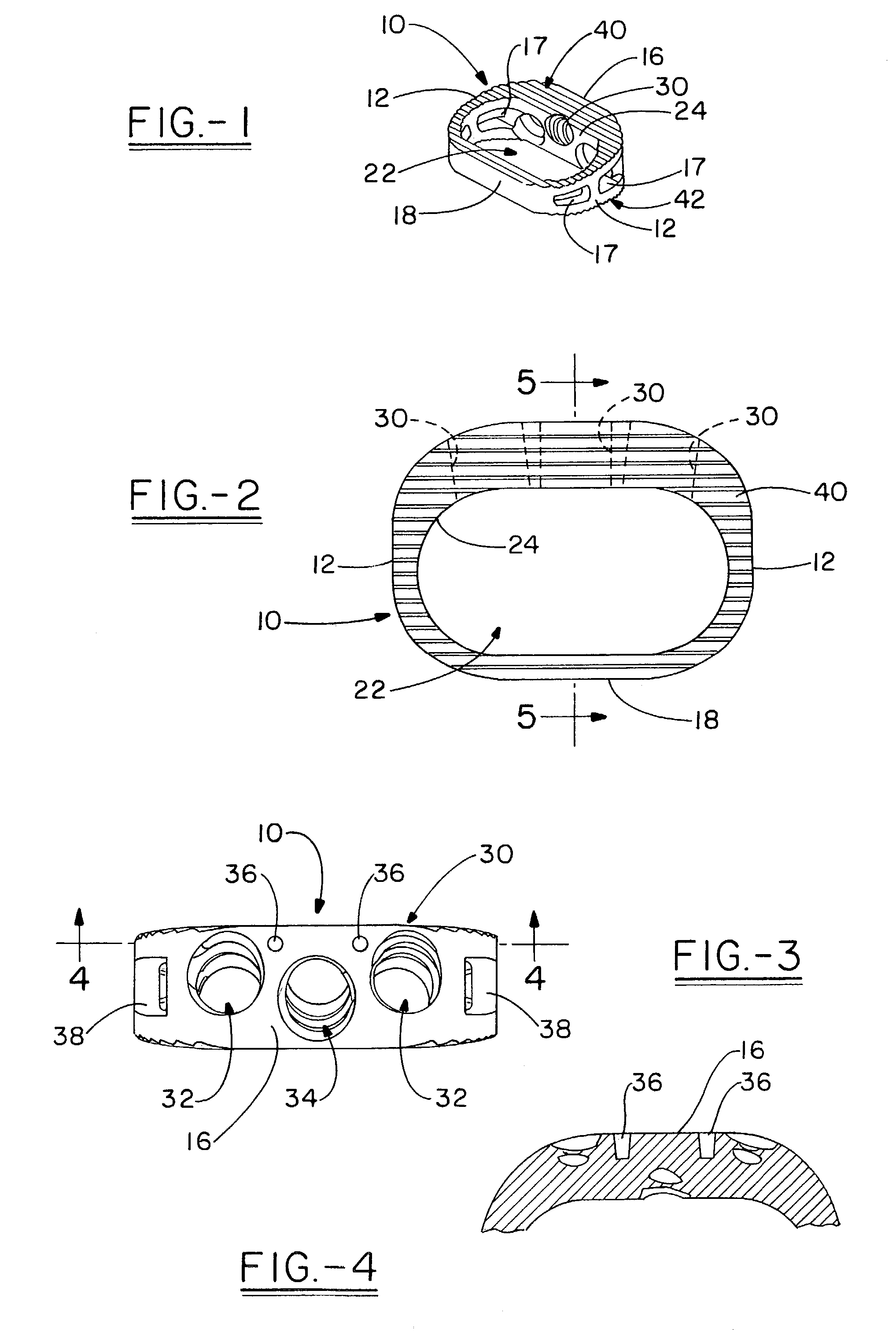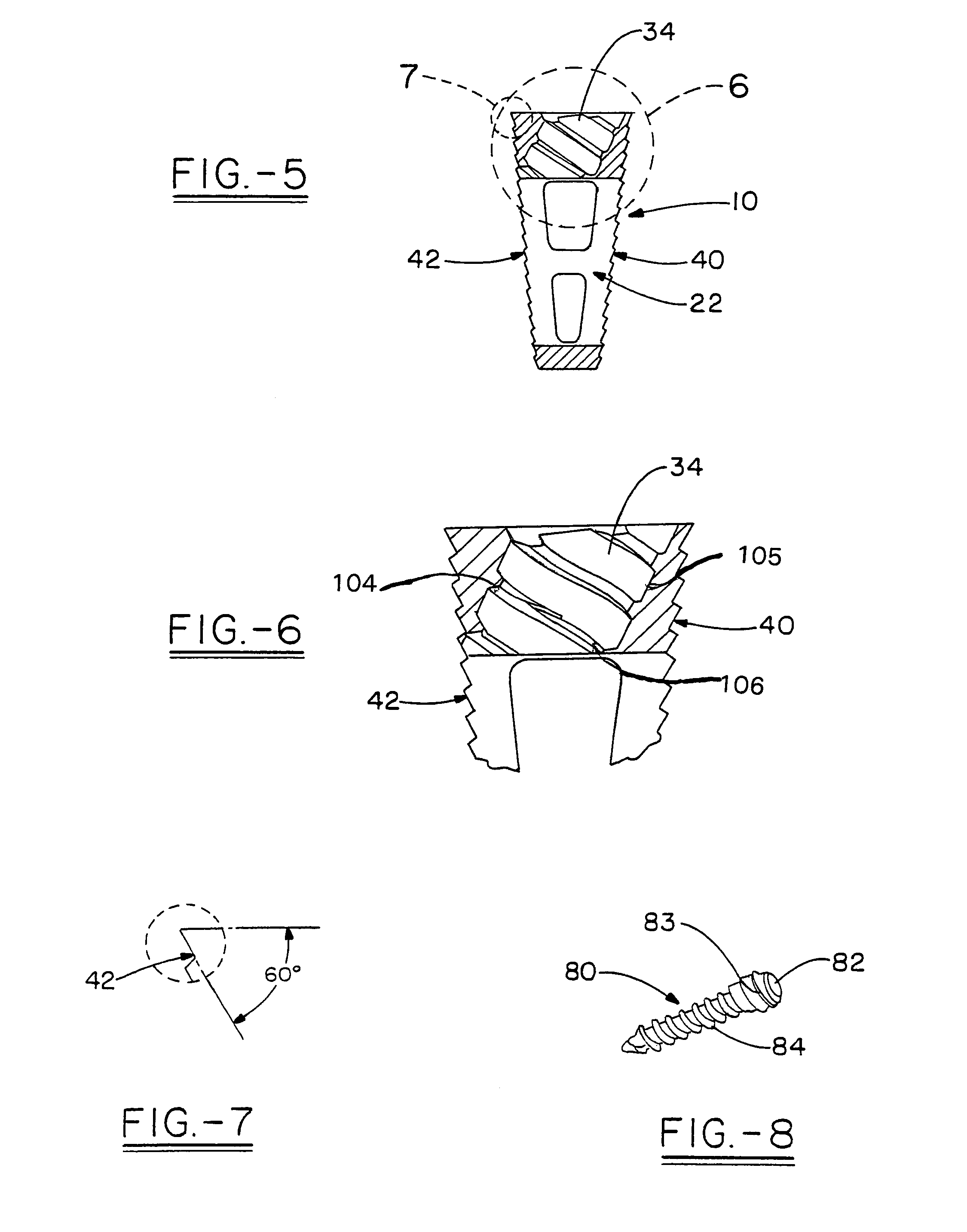Vertebral interbody cage with translatable locking screw
a technology of locking screw and vertebrae, which is applied in the field of vertebral interbody cage with translatable locking screw, can solve the problems of disc loss, loss of normal spinal curvature or proper alignment of vertebrae, and loss of disc shape, so as to achieve the effect of reducing the risk of disc loss, and reducing the normal spinal curvature of the spin
- Summary
- Abstract
- Description
- Claims
- Application Information
AI Technical Summary
Benefits of technology
Problems solved by technology
Method used
Image
Examples
Embodiment Construction
[0036]The present invention provides a vertebral space or cage, shown generally in FIG. 1. The cage 10 has a bracelet or oval peripheral shape with opposing front 16 and rear 18 walls that are generally solid, and are connected by curved side walls 12, that each include double openings, or fenestrations 17 that have a substantially rhomboid outline to maximize the area of visual access to the interior of the cage. The cage is hollow with a center opening 22 defined by a smooth continuous interior surface 24 that generally corresponds to the smooth continuous exterior surface of the cage 10. Further, the cage 10 includes a taper decreasing in height from front to back to provide a wedge shape which is lower at the back (i.e. posterior wall). Differing size cages may be provided with differing amounts of taper depending on the level of the spine where the cage is being implanted. Typically the cage is used to replace a disc, however, it is possible that the cage could be sized and use...
PUM
 Login to View More
Login to View More Abstract
Description
Claims
Application Information
 Login to View More
Login to View More - R&D
- Intellectual Property
- Life Sciences
- Materials
- Tech Scout
- Unparalleled Data Quality
- Higher Quality Content
- 60% Fewer Hallucinations
Browse by: Latest US Patents, China's latest patents, Technical Efficacy Thesaurus, Application Domain, Technology Topic, Popular Technical Reports.
© 2025 PatSnap. All rights reserved.Legal|Privacy policy|Modern Slavery Act Transparency Statement|Sitemap|About US| Contact US: help@patsnap.com



